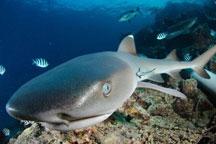Xinjiang Uygur Autonomous Region
2009-09-02 13:13 BJTSpecial Report: 60th Anniversary of PRC |
Watch Video

 Play Video
Play Video
October first marks the 60th anniversary of the founding of the People's Republic of China. News Hour brings you a series of reports on each of the country's provinces, municipalities and special administrative regions. Today's focus is on Xinjiang Autonomous region.
The Xinjiang Uygur Autonomous Region in northwestern China covers an area of about 1.66 million square kilometers, one sixth of the country's territory. It's the largest in area among China's provinces and regions.
Xinjiang has a population of about 21 million, and 60 percent of them are ethnic minorities.
There are 47 ethnic groups, mainly Uygur, Han, Kazak, Hui, Mongolian, Kirgiz, Xibe, Tajik, Ozbek, Manchu, Daur, Tatar and Russian.
The major religions in Xinjiang are Islam, Buddhism, Protestantism, Catholicism and Taoism. Shamanism still has considerable influence among some ethnic groups.
The Han Dynasty established the Western Regions Frontier Command in Xinjiang in 60 B.C. Since that time, the central governments of all historical periods in China have exercised military and administrative jurisdiction over the region.
The region was liberated peacefully in September, 1949. It became an autonomous region in October 1955.
Xinjiang has five autonomous prefectures for four ethnic groups -- Kazak, Hui, Kirgiz and Mongolian; six autonomous counties and 43 ethnic townships.
The GDP of Xinjiang exceeded 400 billion yuan, or 58.9 billion U.S. dollars, in 2008.
Editor: Zhang Ning | Source: CCTV.com
 Mail
Mail Share
Share Print
Print


 Video
Video









 2009 China Central Television. All Rights Reserved
2009 China Central Television. All Rights Reserved